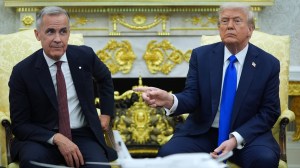Whispers of mergers set off suspicious trading, small players can’t partake
It is against the law to trade on inside information about an imminent merger, however, an analysis reveals that it went on unbated in last 12 months

The boom in corporate mergers is creating concern that illicit trading ahead of deal announcements is becoming a systemic problem.
It is against the law to trade on inside information about an imminent merger, of course. But an analysis of the nation’s biggest mergers over the last 12 months indicates that the securities of 41 per cent of the companies receiving buyout bids exhibited abnormal and suspicious trading in the days and weeks before those deals became public. For those who bought shares during these periods of unusual trading, quick gains of as much as 40 per cent were possible.
The study, conducted for The New York Times by Measuredmarkets Inc, an analytical research firm in Toronto, scrutinised mergers with a value of $1 billion or more that were announced in the 12-month period that ended in early July. The firm analysed the price, the total number of shares traded and the number of individual trades in each stock during the weeks leading up to the announcement and looked for large deviations from trading patterns going back as far as four years. Although any number of factors can lead to spikes in trading, deviations of the kind observed by Measuredmarkets are among the data used by regulators to spot insider trading.
Of the 90 big mergers in the period, shares of 37 target companies exhibited abnormal trading in the days and weeks before the deals were disclosed. Christopher K. Thomas, a former analyst and stockbroker who founded Measuredmarkets in 1997, said that his company’s analysis led to the conclusion that the aberrant activities most likely involved insider trading.
The New York Times found that, in a handful of the mergers, significant progress toward a deal was being made on the days unusual trading occurred. For example, the day that four bidders were putting together buyout offers for Amegy Bancorp, a Houston bank company, trading in its stock quadrupled. Attempts to quantify the amount of potential insider activity in deals have come up short in the past, in part because the regulators with access to detailed information do not release it.
The Securities and Exchange Commission does not disclose, for example, the percentage of referrals it receives from exchanges that wind up as cases. The SEC would not comment on the study but said that it had looked at Measuredmarkets’ system and concluded that surveillance techniques of self-regulatory organizations like the New York Stock Exchange were more sophisticated.
Securities regulators, traders and academics agree that merger waves lead to more illicit trading on nonpublic information. In Britain, regulators have made insider trading a primary focus and have shifted their scrutiny to brokerage firms and institutional investors, rather than individuals, involved in mergers.
Some economists and academics assert that insider trading is essentially a victimless crime and therefore not worth deploying regulatory armies to battle. But there are losers, including small investors who miss out on gains, when such trading moves markets. Moreover, many investors are troubled by what they now see as rampant insider trading, saying it fosters the perception that insiders can profit in the markets at the expense of outsiders.
–GRETCHEN MORGENSON



- 01
- 02
- 03
- 04
- 05




























